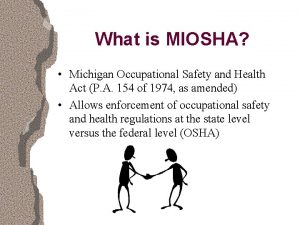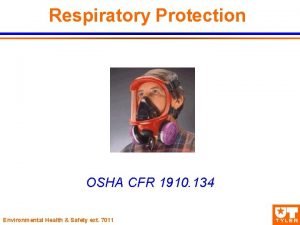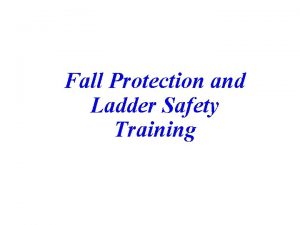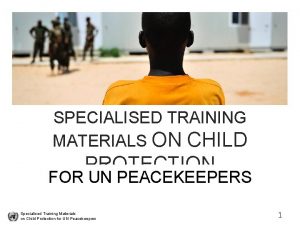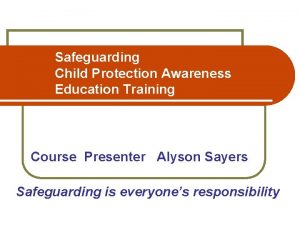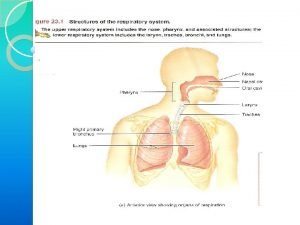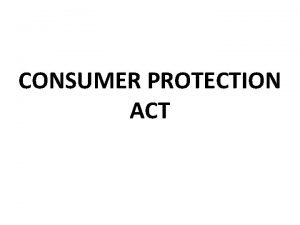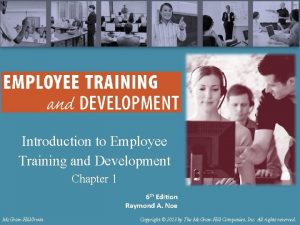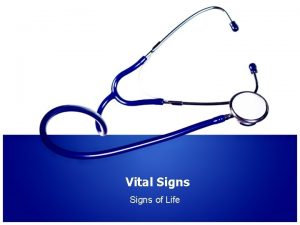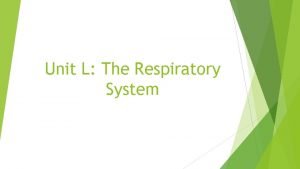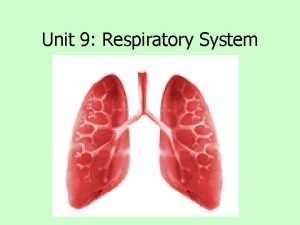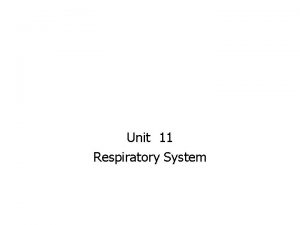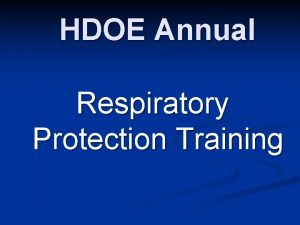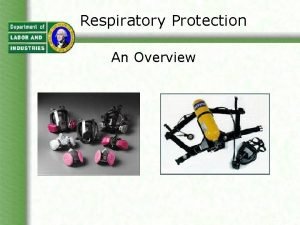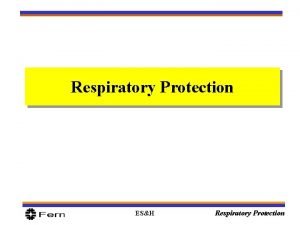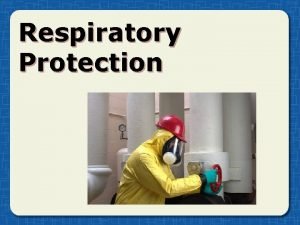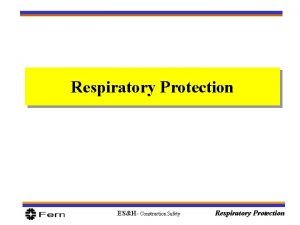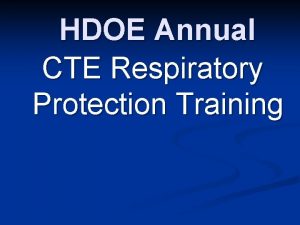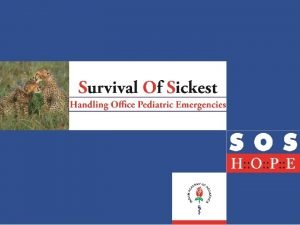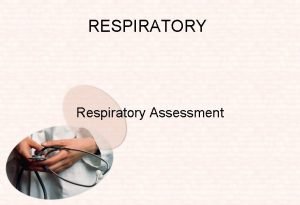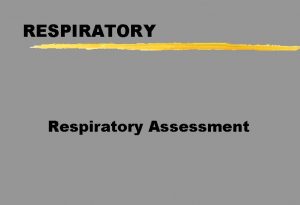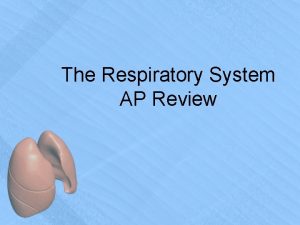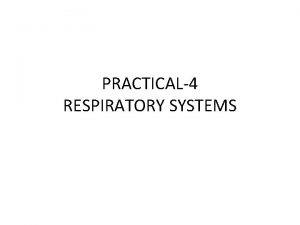Respiratory Protection Training Introduction to Respiratory Protection from



















- Slides: 19


Respiratory Protection Training

Introduction to Respiratory Protection from OSHA (click photo for video)

Why do you need to wear a respirator In weatherization? 1. To protect from airborne hazards that are present in the work environment 2. To protect from aiborne hazards that are created by the worker during the course of Wx tasks

Example of hazards Lead Mold Particulate Matter Biologicals Asbestos Foam Vapors For a more comprehensive list, please refer to the IN-CAA written respiratory protection plan

Respirator limitations Air purifying respirators that utilize a filter to remove hazards from breathing air offer NO protection from low oxygen, carbon monoxide, or flammable gas products.

Respirator Limitations Before entering a space that could contain carbon monoxide, combustible gas products, or low oxygen you must first test that space before entry. Personal CO detectors, gas leak detectors which measure LEL, or 4 gas analyzers provide information to ensure protection in these spaces. A respirator does not.

Before wearing your respirator Click photo for video

How your respirator will be fit tested Click photo for video

Wearing a respirator Click photo for video




Note: If brand of respirator differs from 3 M please follow that product’s manufacturers instructions for donning, doffing, and user seal checking. Contained in the box of new respirators are the manufactures instructions. Each new brand of respirator must be fit tested for every user before it can be worn.

Most important--Your respirator will not protect you if you don’t wear it!!!!!

Cleaning/maintaining your respirator

Manufacturer specific training

Selecting the correct filter for the hazard Employee position or activity Chemicals or products used NIOSH approved respirators assigned When used (routinely, infrequently, or in emergencies) For All IN-CAA training and all IN-CAA production staff Cellulose Filtering Face Piece N 95 or greater Routinely For all Fiberglass Filtering Face Piece Routinely N 95 or greater For all Lead Filtering Face Piece or Half Mask minimum P 100 Routinely For all Potential Asbestos Filtering Face Piece or Half Mask minimum P 100 Routinely For all Low pressure Plural component spray foam Full face 3 M with Yellow/Magenta cartridge Infrequently For all Mold spores Filtering Face Piece or Half Mask P 100 Routinely For all Other biologicals, Fecal contaminants, VOC’s, nuisance dust particulates Filtering Face Piece Routinely Air borne biologicals bacteria, viruses, etc Filtering Face Piece For all N 95 or greater Infrequently

For questions, contact IN-CAA.
 Conductive zone vs respiratory zone
Conductive zone vs respiratory zone Michigan occupational safety and health act
Michigan occupational safety and health act Osha 1910-134
Osha 1910-134 Who trains employees that work on scaffolds
Who trains employees that work on scaffolds Ladder outline
Ladder outline Child protection training materials
Child protection training materials Child protection awareness training
Child protection awareness training Respiratory introduction
Respiratory introduction Introduction of consumer protection
Introduction of consumer protection Training is expensive without training it is more expensive
Training is expensive without training it is more expensive Metode of the job training
Metode of the job training Aggression replacement training facilitator training
Aggression replacement training facilitator training Introduction of participants in training
Introduction of participants in training Introduction to employee training and development
Introduction to employee training and development Essay structure
Essay structure 5 tanda vital sign
5 tanda vital sign Normal vital signs of newborn
Normal vital signs of newborn Bozeman respiratory system
Bozeman respiratory system Unit 9 respiratory system
Unit 9 respiratory system Diagnostic test of respiratory system
Diagnostic test of respiratory system

